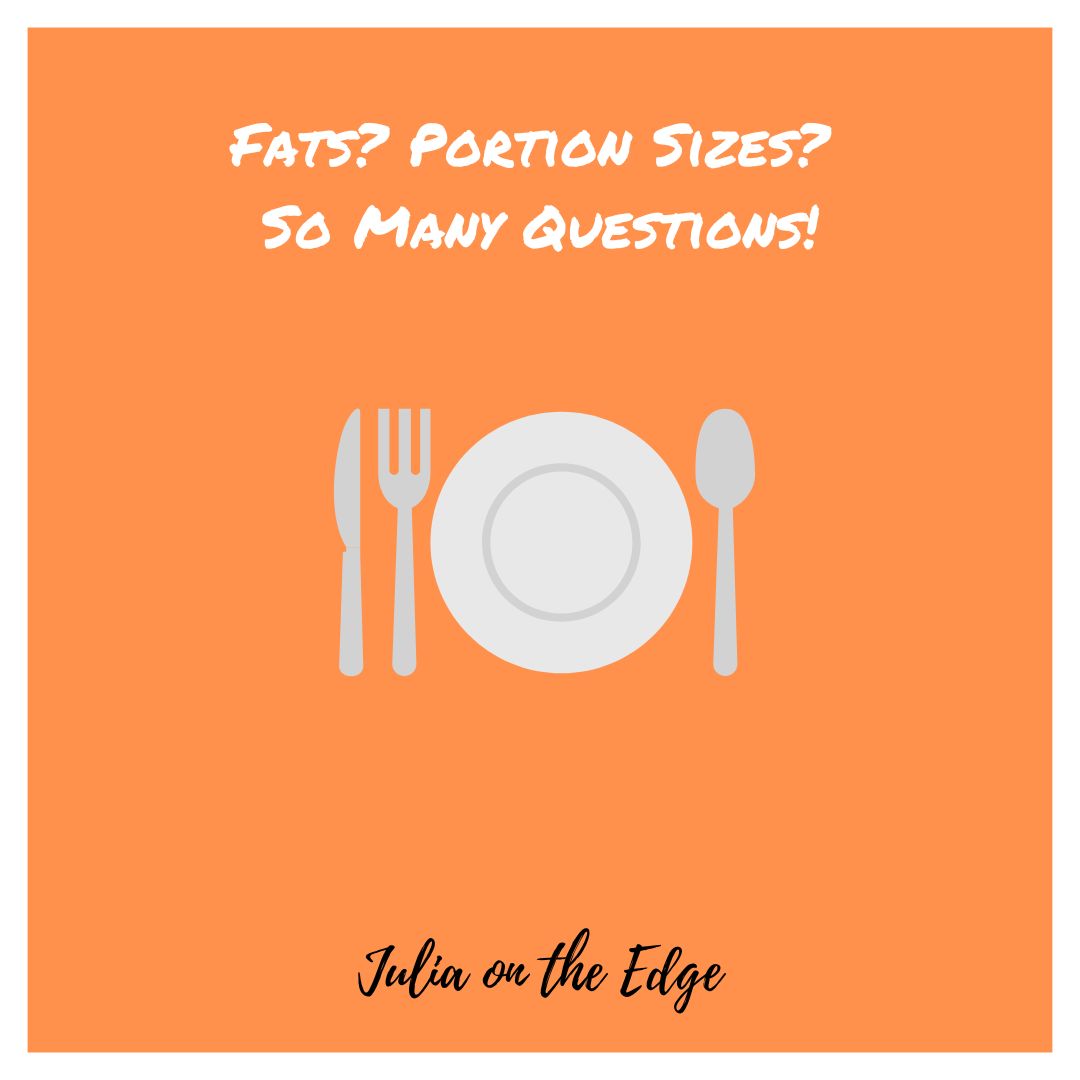Today I am going to address two points from my Changing Family Habits post. Cutting back on both of these are things that I think some of us think will help, but in the end, don’t always have the desired outcome. You need the right amounts of both.
Less fat generally means added sugar. Fats add richness and flavor to foods so eliminating them means manufacturers need to add something to make the food taste good. What they add is sugar.
Fat is an essential nutrient. Our bodies need fat as a source of energy, to protect organs, and to build cellular structures in our bodies. Cell membranes and our brains are made up primarily of fats. Fats are also necessary for certain hormone production. Cutting out all fats in our foods isn’t only almost impossible, but it can be dangerous.
Over the years, we have seen the rise, and now the slow fall, of low-fat and fat-free foods. I can get into a whole discussion on why this is, but that is more than I want to address in a blog post. The fact is that the fats in foods make foods more palatable and tastier. Think of the difference between heavy cream and skim milk. The fats in the cream make it smoother and provide a richer taste. In some food products, when we start taking out fat, the foods start tasting dull and not good. Something has to be added in to make that food taste better and that something is sugar. (Please do not interpret this as me saying that sugar is added to skim milk. It’s not.) Low-fat bakery items, yogurts, ice creams—all have either added sugars or artificial sweeteners to make up for the richness the fats provided. If you have to choose between higher fat and higher sugar, go for the higher fat.
Portion sizes matter. Not only do you not want oversized portions, but make sure you and your family are eating enough. If kids aren’t getting full servings, they are going to be hungry and then be overeating on snacks both healthy and not-so-healthy.
The third point in my original post was about portion sizes. I’m guessing that if you are reading this and have an interest in health and wellness, you know that portion sizes in this country have gotten ridiculously out of control. In my job at the hospital, I would lead trainings for after school staff on getting kids active and teaching about childhood obesity. In the presentation were pictures of portion sizes in the 1950’s-1970’s compared to the 2010’s. What we are served at restaurants is usually at least 2-3 servings. We now think this is normal. One of the easiest ways to improve family health and to start losing weight if that is a goal of yours is to reduce your portion sizes.
Likewise, cutting portions too small can be problematic as well. Sometimes when we are trying to reduce weight, we cut portion sizes as mentioned above, but we go too far. Cutting portion sizes and thus calories too low can actually make your body hold onto calories because it doesn’t know when its going to be fed again. Our bodies direct those crucial calories to our organs to keep our bodies alive and we don’t have enough for other things. We start to get tired, have brain fog, and low energy. We are also hungry which can lead to binge eating or constant snacking.
Did you know that a serving of veggies or fruit is 1 cup? Now think about having 5 of those in a day. That’s really a lot of food! Add in proteins, grains, and dairy and just fitting in the appropriate servings from the basic food groups is going to give you more food than you can probably eat. Check out MyPlate.gov for more information on servings sizes and to find out more about how many servings of each food group you and each member of your family should be aiming for every day.
Storytime! I worked with a family who had concerns about one of their children gaining weight at a faster rate than they were growing tall resulting in overweight. We took at a look at what the family was eating and made a few adjustments. Mom said the child was always hungry and would overeat on snacks. As we worked on increasing veggies and proteins, mom realized that she wasn’t feeding the child enough of key foods at meals. When she increased portion sizes, the child was feeling more full and wasn’t snacking as much. The child was also more willing to chose healthier snacks as they weren’t super hungry after school. Mom felt bad and I assured her that she wasn’t denying her child food. She was still feeding the child, and the child wasn’t even cleaning their plate at meals leading mom to think she was serving them enough.
What made the difference was 1) looking at the mix of foods and portion sizes, 2) offering foods the child liked while encouraging them to try new things, 3) working with the child on learning about healthy choices, healthy portion sizes, and helping them set goals around eating fruits and veggies.
I want all of you to make healthy food choices and to ENJOY your food! Don’t deprive yourself. Eat for nutrition. And if you need a little help figuring it out? That’s what I’m here for!
Peace from The Edge,
Julia

